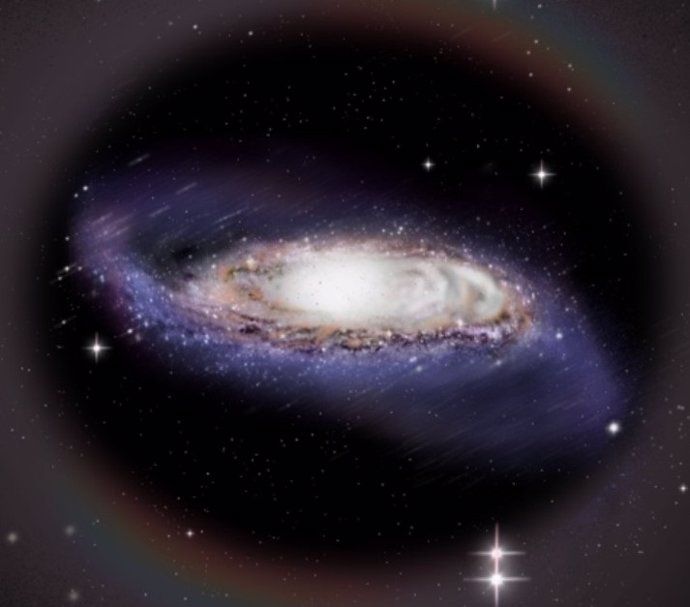In this artist’s impression, the warping galactic disk “dances gracefully” under the torque of the dark matter halo. – KAIYUAN HOU/ZHANXUN DONG
1 Jul. () –
An international team has pioneered a method of “moving picture” to measure the rate of precession of the deformation of the Milky Way disk.
Using a sample of Cepheid variable stars of different ages, this method allows clearly observe the direction of precession and the rate of deformation of the Milky Way, according to the authors.
Based on these measurements, the research team at the Peking University revealed that the Milky Way’s current dark matter halo is slightly flattenedThe resulting article is published in Nature Astronomy.
In the nearby universe, nearly a third of disk galaxies are not perfect disks, but instead exhibit a warped shape resembling a potato chip. Astronomers refer to this phenomenon as disk warping. The Milky Way, as a typical disk galaxy, It also has this deformation feature.
This tilted and spinning galactic disk, very similar to a top, inevitably undergoes a precession due to the torque exerted by the dark matter halo that surrounds it. However, the measurement of this important dynamic parameter, both in direction and speed, has been much debated.
This is because previous measurements were based on indirect kinematic methods, where the tracers used are subject to dynamic disturbances or heating effects, which greatly limits its precision and accuracy.
This study used 2,600 classical Cepheid variable stars discovered by Gaia as tracers, along with precise distance and age data from both Gaia and LAMOST. Using this sample, the researchers applied the method of “moving picture” to construct the three-dimensional structure of the Milky Way disk through populations of various ages.
By “watching” how disk deformation evolves with age, this study found that deformation precesses in a retrograde direction at a rate of 2 km/s/kpc (or 0.12 degrees per million years).
More detailed measurements show that the precession rate decreases with radial distance, indicating that the current dark matter halo surrounding the curvature is slightly flattenedwith a flattening value q between 0.84 and 0.96.
Given the young nature of the disk deformation traced by the Cepheids (less than 200 Myr), the focus of this research directly measures the shape of the current dark matter halo.
This measurement provides a crucial anchor point for studying the evolution of the Milky Way’s dark matter halo.







![[Img #74130]](https://thelatestnews.world/wp-content/uploads/2024/10/Richard-Dawkins-The-scientist-who-changed-our-understanding-of-evolution-150x150.jpg)



![[Img #74130]](https://thelatestnews.world/wp-content/uploads/2024/10/Richard-Dawkins-The-scientist-who-changed-our-understanding-of-evolution-300x200.jpg)

Add Comment